Variations on the Blues Progression
How To Tweak The 12-Bar Blues Progressions
The framework for and structure on which blues music is constructed is the 12-bar blues progression.
It’s a progression that in its most basic form consists of three chords (I, IV, V) played at specific instances over 12 measures.
The basic 12-bar blues looks like this:
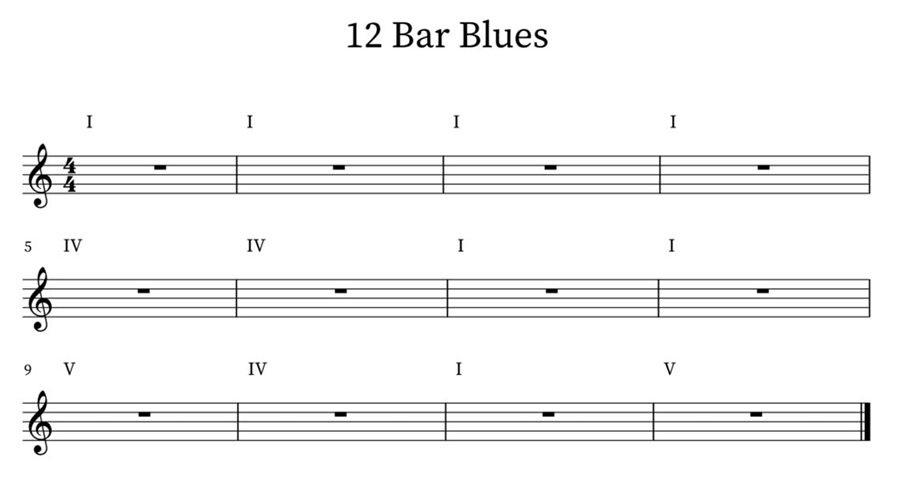
The Roman numeral analysis of this structure doesn’t effectively tell the whole story though.
Each of these chords is normally heard as a dominant 7th chord.
A series like this, of chords behaving as:
- Tonic chord
- Subdominant chord
- Dominant chord
Has no standing or precedence in Western classical theory which is precisely why it is such a unique formal contribution to music.
To our post-20th-century ears, this progression is a common occurrence in music outside the blues realm, including country, jazz, and rock and roll.
The chord progression as written above, without the dominant 7th designations, is most common in folk and pop music structures.
Mozart and Haydn would be flabbergasted by the prospect of a dominant chord not resolving to its tonic because the tension-release concept of a formal V7-I was the backbone of harmonic motion at that time.
These chords remain unresolved but still sound like a proper family of chords due to the familiar root movement of tonic, subdominant, and dominant.
As a dominant seventh chord then, each chord in a 12-bar blues contains a tritone, the interval that creates the tension so deserving of a tonic release.
Again, our modern ears hear that dissonance as a ‘blue’ note that doesn’t have to follow the old rules.
As the form moves forward into an ever-changing twentieth century it can’t help but undergo some changes based on the evolution of jazz music in particular.
Jazz is also breaking some old rules by incorporating more dissonance and even more chords.
It is always borrowing just enough from classical theory to keep harmonic motion from sounding too inaccessible.
Adding New Chords | Basic Rules
The 12-bar blues form traverses early jazz and swing with some small changes here and there but adds new harmony in the be-bop era when some curious minds are looking for more chords over which to improvise.
The mechanisms to add these chords follow three basic rules.
- 1) Since these are all dominant chords any pre-dominant chord can precede them.
- 2) The tritone substitution concept brings chromatic harmonized bass lines into play
- 3) Altered chords can bring new dissonances over existing bass lines adhering to the form
And so...
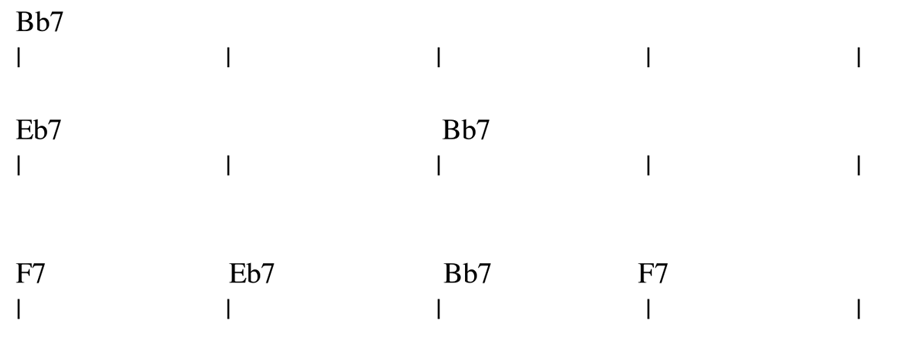
becomes…
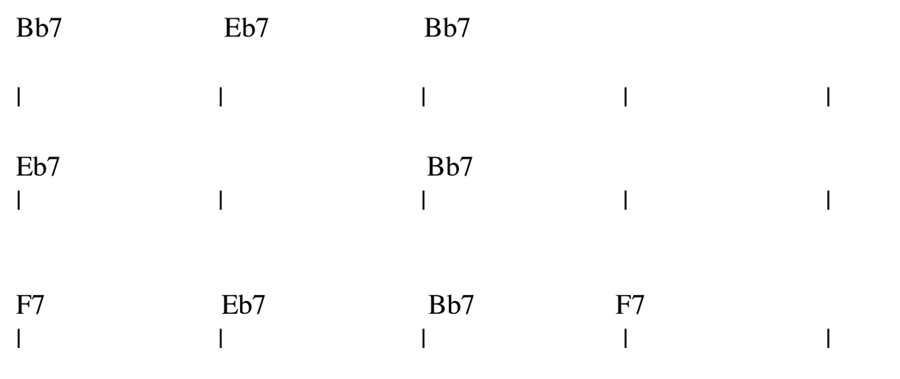
becomes…
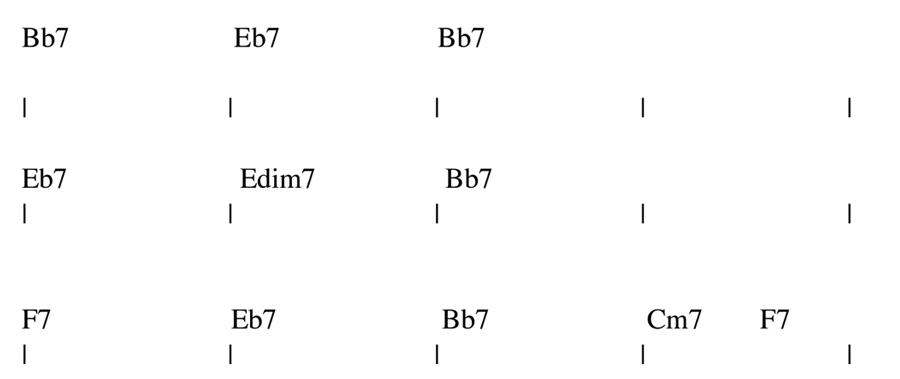
becomes…
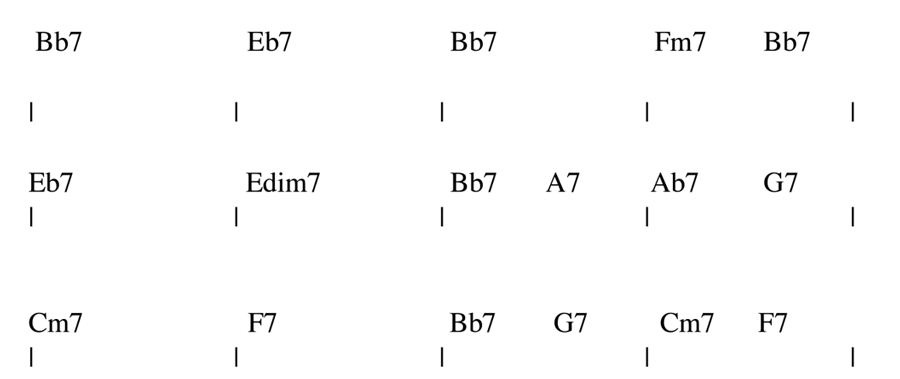
becomes…
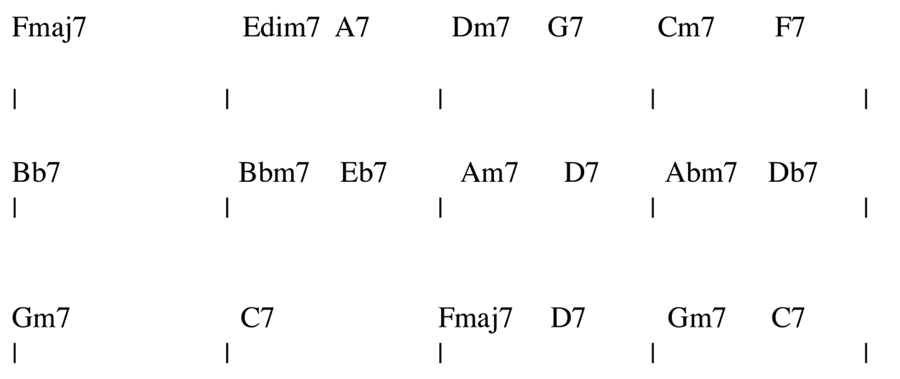
Quite a transformation!
So now you have new things to experiment with. To stay updated, subscribe here